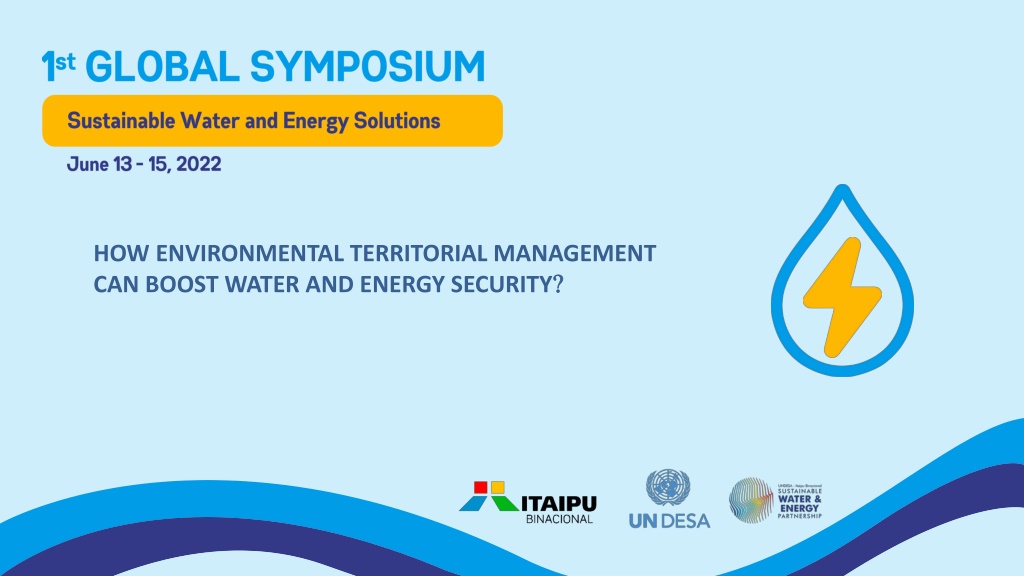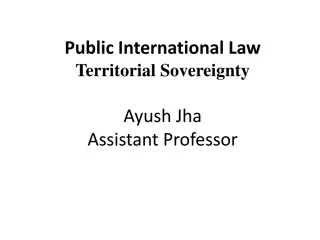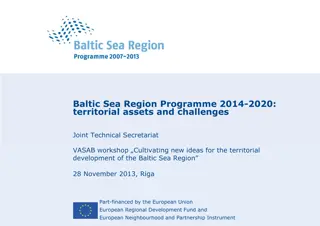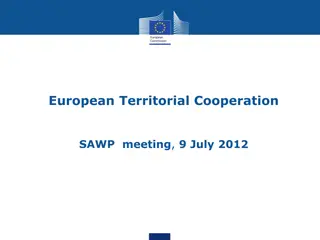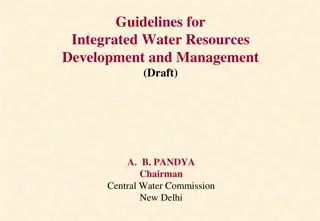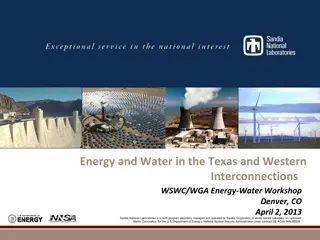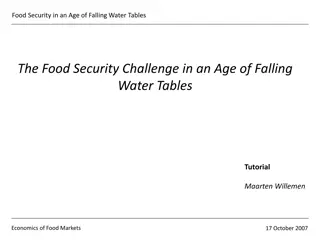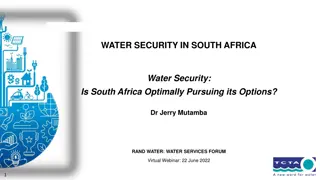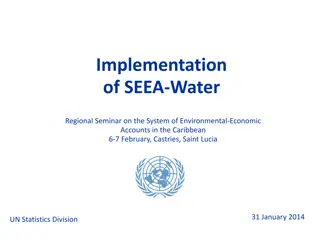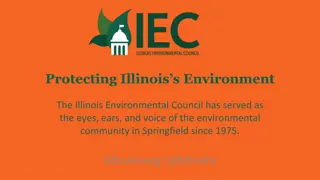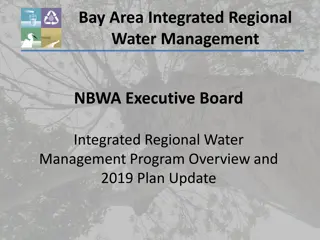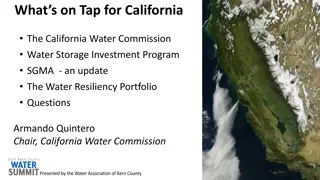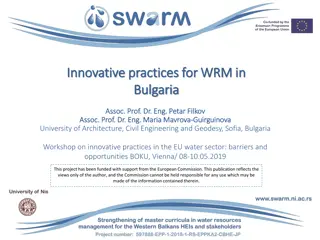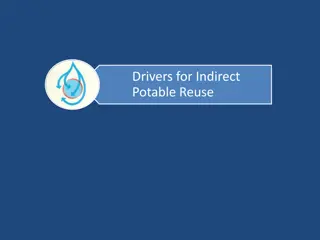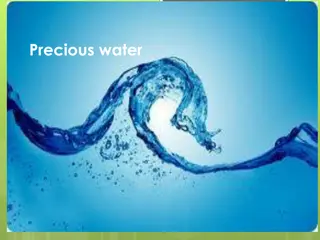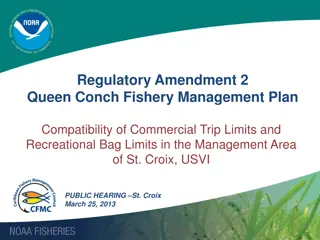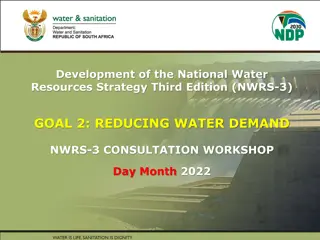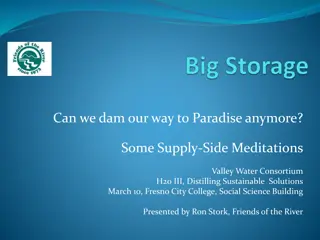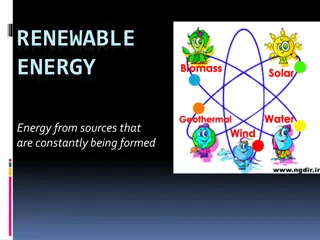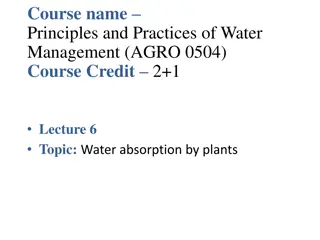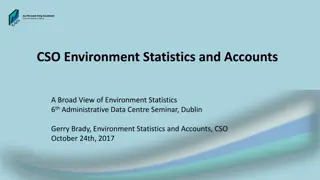Environmental Territorial Management for Water and Energy Security
Environmental territorial management plays a crucial role in boosting water and energy security. The approach focuses on the Parana River basin, encompassing numerous reservoirs and dams, highlighting challenges to water security such as ecosystem services loss and increased loads in water bodies. Initiatives like nature-based solutions at the Itaipu reservoir in Brazil and Paraguay showcase efforts towards protection and restoration. Additionally, analyses on the territory's landscape evolution underscore the importance of sustainable practices for preserving natural resources.
Download Presentation

Please find below an Image/Link to download the presentation.
The content on the website is provided AS IS for your information and personal use only. It may not be sold, licensed, or shared on other websites without obtaining consent from the author. Download presentation by click this link. If you encounter any issues during the download, it is possible that the publisher has removed the file from their server.
E N D
Presentation Transcript
HOW ENVIRONMENTAL TERRITORIAL MANAGEMENT CAN BOOST WATER AND ENERGY SECURITY
THE ENVIRONMENTAL TERRITORIAL MANAGEMENT APPROACH Parana River 835.398 km (10% of Brazilian territorial surface) = ~ France + Italy 57 medium and large reservoirs/dams in the river basin Porto Primavera Dam ITAIPU Reservoir influence area Rosana Dam 160.767 km of direct drainage area 240 municipalities in the direct drainage area Atlantic Forest Biome Itaipu Dam 184 years - Itaipu reservoir life span
THE TERRITORIAL INFLUENCE ON WATER Milk Chicken CHALLENGES Fish production 1 Decrease of natural structure and ecossistem services; Pig 2- Increased loads in water bodies: Agriculture products Phosphorus Nitrogen Sediment Productive chains In the Western Paran Region Logistic Environmental Impacts and Ecosystem dependence Turism WATER SECURITY
Atlantic Forest Challenge What happened between 1890 -2010? Forest loss = ecosystem services loss
ITAIPU NATURE-BASED SOLUTIONS (NbS) Reservoir and Protected Areas 101.000 ha Protected areas + Protection Belt 24 million trees planted in the Brazilian margin Paraguay 28.139 ha Reserves Brazil Paraguay Brasil e Paraguai 1.356 ha 3.391 ha 7.145 ha Protected areas Brazil Paraguay 29.475 ha 31.226 ha Protection Belt Extension/BR 1.395 Km Width/BR 210 m Extension/PY 1.524 Km Width/PY 205 m Protection Belt Partnerships for restoration in the territory
ITAIPU TERRITORY LANDSCAPE ANALISYS (Tambosi et al, 2021 - Federal University of ABC) 1985-2017 2017 1985 Natural Forest Cover Natural + Itaipu s restoration Natural forest cover (without Itaipu s restoration) Natural Forest Cover 2017 Natural cover with Itaipu restoration 1985 2017 Natural Cover Restored Forest Hectares % Hectares % Hectares % Forest Cover 191.564 18.2 160.869 15.3 234.583 22.3 Noof Fragments 17.439 25.740 14.584 Ecological Corridors 24.879 13 13.330 8.3 44.139 18.8
Benefits of functional forests on water and environment quality Riparian vegetation reduces sediment runoff and phosphorus upload to the reservoir Decrease in sediment load Increase in water resources protection Decrease excessive nutrient load to the rivers and reservoir Increase dissolved oxigen levels Increase ecological connectivity Increase carbon sequestration Piffer et al. 2021 Ecological Applications
CLOSING REMARKS Territorial environmental management + collaborative nature restoration Benefits to water and energy security:
